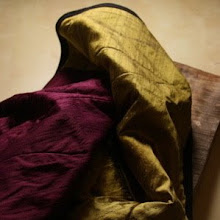If he had a visitor, or a delicious meal, or a pleasant outing -- even just around town or to the grocery store -- on the drive home he would begin: "another lucky day!" I'm sure part of it was simply gratitude for life. Every day is surely a gift. But it was also the little things, and particularly the joy of family, that most inspired his appreciation. A visit with his childhood rival turned brother-in-law, a chance to play puppeteer for his great grandchildren, a reading from The Hobbit by his daughter, edge-of-your-seat stories of his sons' travels, a mouthwatering home cooked meal with his beloved wife. All lucky.
Gratitude is a gift that comes too late for some. I believe it's best enjoyed early in life, so it can ripen into a constant companion. The kind of companion that sits with you in your grief or loneliness. That calls you on your excessive pride. That stands with you as you reach out to those in need.
Every year -- for what I'm told is over 100 years now -- we gather our extended Slocum family (which includes, of course, Hilliards, Cottinghams, Nelsons, Newtons, Johnsons, Streaters, Ortizes, Ingletons, Meehans, Harrisons, LaFerrieres, and more) to celebrate Christmas, just before the actual day. It is an outrageous celebration of food, fun, games, and desserts. And gifts. Every family, and many individuals, arrive laden with gifts for each family member and their guests. For the past few Christmases, my contribution has been a doodle of a family phrase printed onto t-shirts. I call them "Dadisms" because these sayings, no matter their true origin, were made known to me through my dad (or his dad). As I ride home from last night's festivities, I can't help but feel grateful for my loving, supportive, and boisterously joyous family. And I know exactly what my father would have said:





